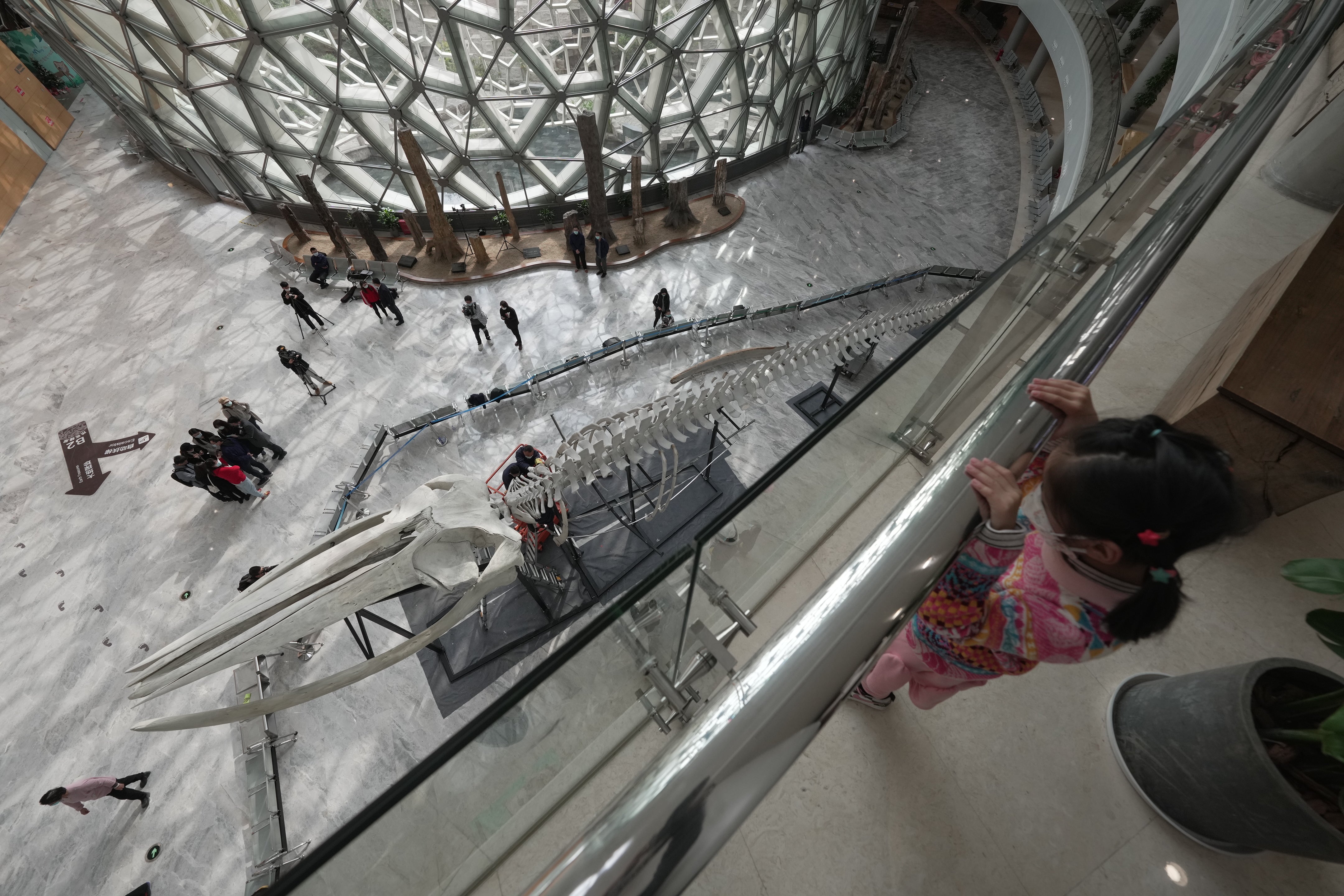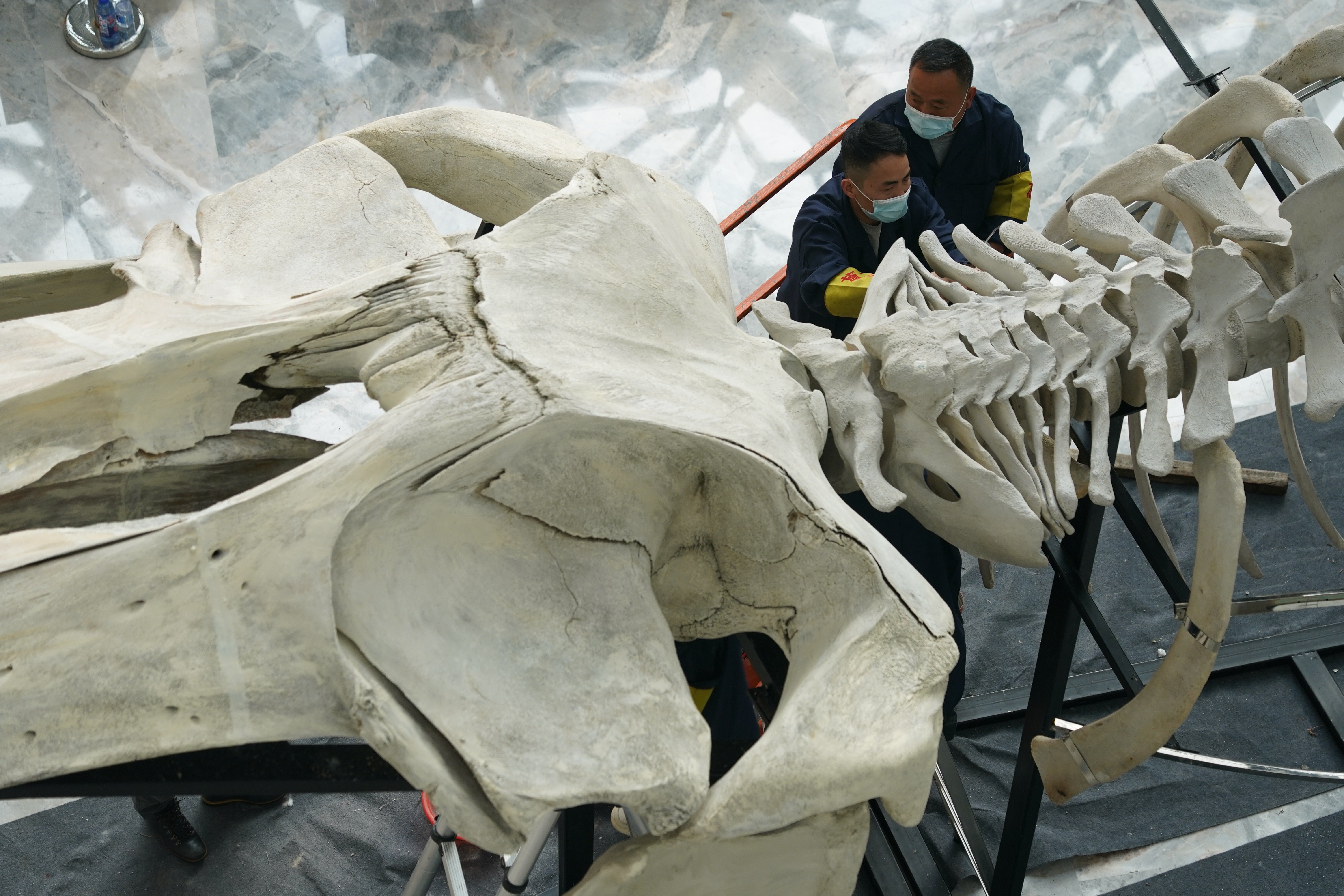Whale of a job
THE ARTICLES ON THESE PAGES ARE PRODUCED BY CHINA DAILY, WHICH TAKES SOLE RESPONSIBILITY FOR THE CONTENTS

Donning a gas mask, Zhang Tangming carefully made an incision on his subject after the area had first been evacuated in case of explosion. But Zhang wasn’t dealing with an explosive device. He is a taxidermist at the Shanghai Natural History Museum and was dealing with a dead whale.
This assignment took place in March 2017, when fishermen found a whale carcass off the mouth of the Yangtze River and towed it to the coast of Shanghai.
Thanks to the efforts of Zhang and his colleagues, the skeleton of the 79ft whale was finally displayed to the public on December 10, 2021 in the centre court of the basement of the Shanghai Natural History Museum. This is the largest whale skeleton that has ever been displayed in China.
Accomplishing this feat required the taxidermy team from the museum to perform a series of arduous and complex tasks. The assignment also came with personal sacrifices. Zhang, for instance, stank of dead fish for a week and couldn’t bring himself to eat fish for the months that followed.

“The whale was huge, and the rotten flesh stank,” recalls Shan Kun, deputy head of the museum’s taxidermy division, which was roped in to help after experts from the Shanghai Ocean University suggested the whale be turned into a specimen for research and education.
“Decayed tissues filled the carcass with methane gas, meaning it could explode any minute,” he adds. This, coupled with the factor that the 40-tonne whale body was in soft sand and would trap the tyres of heavy-duty transport vehicles, meant the 12 professionals from the museum had to dissect the carcass in situ.
The first thing the taxidermists did was to set up float lines around the whale’s body to avoid its blubber from polluting the waters. They also placed bamboo rafts around the whale to avoid sinking into the sand themselves while working on the body. The taxidermists then cut away the flesh before placing it in bags that had to undergo special treatment before incineration.
For the next 18 days, the coast was their office. The work continued after the bones were transported to the museum’s taxidermy centre. In this second phase, the taxidermists decided to thoroughly remove the flesh from the bones without using chemicals. Instead, they put the skeleton in a big tank filled with water containing special microbes to eat the remaining meat pieces attached to the bones.
When this time-consuming process was completed, they used specially designed steaming equipment to remove the remaining grease from the bones.
According to taxidermist Ruan Minjie, the bones were mostly yellow, with some parts blackened due to thick grease. It was only after several rounds of steaming that the bones turned white. Working with the giant bones was no easy feat. A small rib bone could weigh as much as 26lb. The skull of the whale was a whopping 1.5 tonnes.
In the last phase, the team fashioned replica bones to replace the ones that were missing from the whale’s left fin and left jawbone. They also had to create customised fixtures to mount the massive skeleton. The entire project took the team four years to complete. Shan says such projects keep him passionate about his job, which he describes as a “multidisciplinary profession”.
Previously published on Chinadaily.com.cn

Bookmark popover
Removed from bookmarks